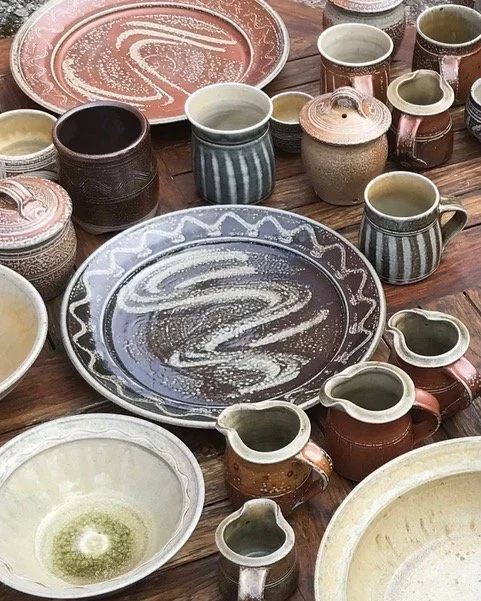It’s about time I put something on this page. As any potter knows, there is not always a great deal to report, so here are some pictures of the catenary kiln. It is a very satisfying form to make. Just hang a length of chain from two nails in a piece of Stirling board, placed apart the intended internal base measurement of your kiln (usually a multiple of 9 inches, the standard size of a brick). Adjust the chain until the arch formed is to the desired internal height, typically about the same as the base width. Use a can of spray paint (or a hand spray) to record the curve. Cut it out with a jigsaw. Make a copy. Join the two arches with battens and wrap the whole lot in dampened hardboard sheets. That’s your arch former (“centring”). The next bit is more tricky: most of the bricks are standard “straights”, and a bit of mortar is all that’s needed to add the slight curve of the “sides”, but you will need wedge shaped bricks at the base of the curve and especially at the top. Soft bricks can be cut by hand (you’ll get through a lot of blades), but you can buy them in standard sizes. I made paper cut out versions to test the idea full-scale first, then ordered from a supplier (for pizza/barbecue ovens). I still had to do some cutting for the very top.
The result is the neatest of the three catenary kilns I’ve built (so far; they tend to warp a bit after a dozen firings). I have braced it with steel, for although the catenary curve should be in perfect equilibrium, the flat end walls, not being keyed into the structure, tend to bulge out during firing.
That’s enough of that (though, by the way, the architect, Gaudi, designed a whole church upside down by hanging chains). Results so far (five firings) have been encouraging.
The next bit will be (even more?) boring unless you have already been approached by Kids for Life to take out advertising in a magazine intended to “raise awareness of cancer in children”. Two previous news posts dealt with this and have attracted around three dozen “comments” from businesses who have felt themselves duped of a sum in the region of £150-£400 for an advertisement that received no circulation. Last week I received a letter from the chairman of Kids for Life requesting that I remove these comments as they are generating negative publicity for his cause. Kids for Life, he points out, has made donations to appropriate charities. However this is not exactly what the complainants were paying for, however generously disposed they feel towards sick children and their families. I have suggested that only when he has demonstrated to all the correspondents on my page that their advertisement was distributed across their region, as promised, and that his donations to charities are proportionate to the income he has generated from businesses such as theirs, will it be appropriate to close the correspondence.









